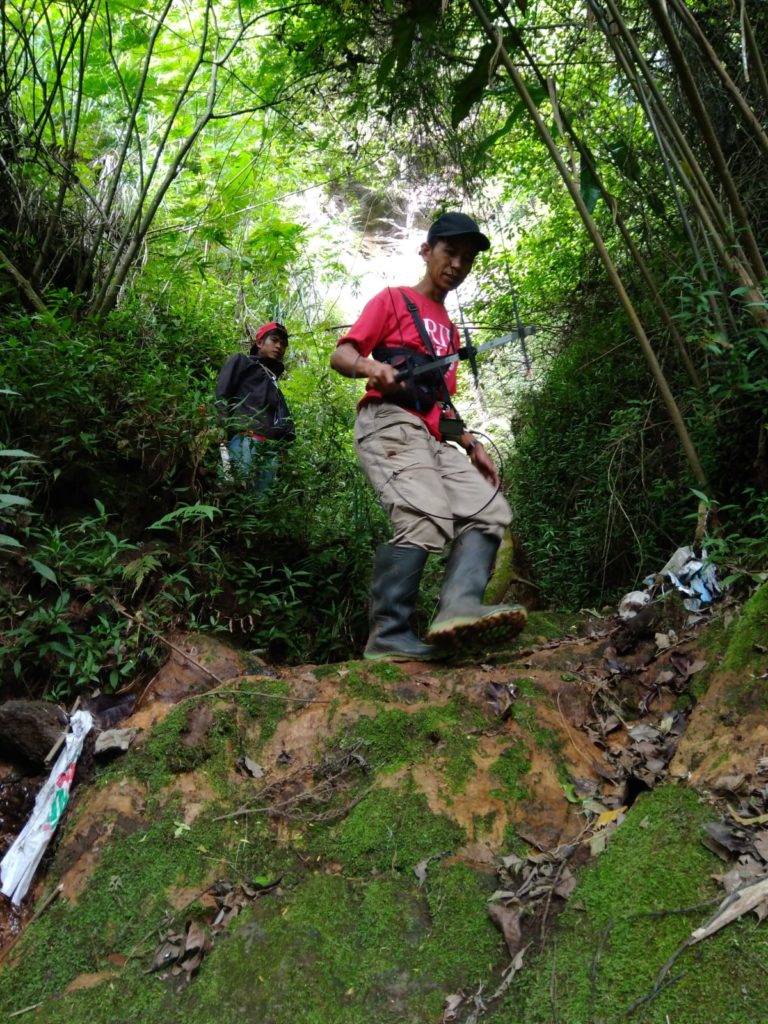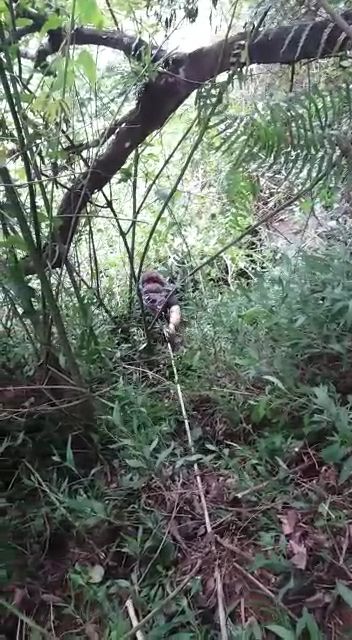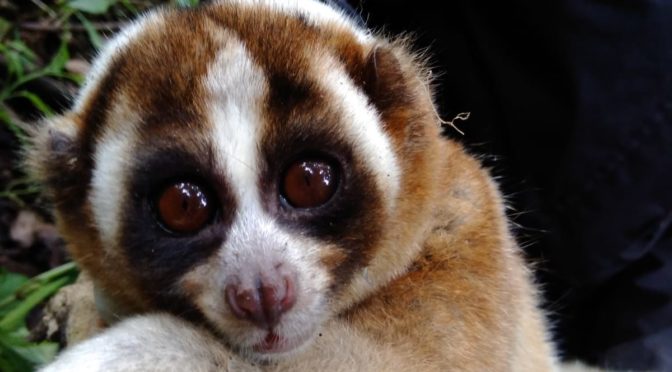Working with wild animals is always a challenge, we can never predict their behaviours, movements, and dispersal. We know when we collared juveniles, we will follow them for a year, we will watch them growing up and learning everything they should know before they become brave enough to leave their family, to disperse through unknown dangerous places and establish a new home range. This time recently happened to our lovely Lalit. Son of Lucu and Rufio, our courageous boy left to find his own home range.
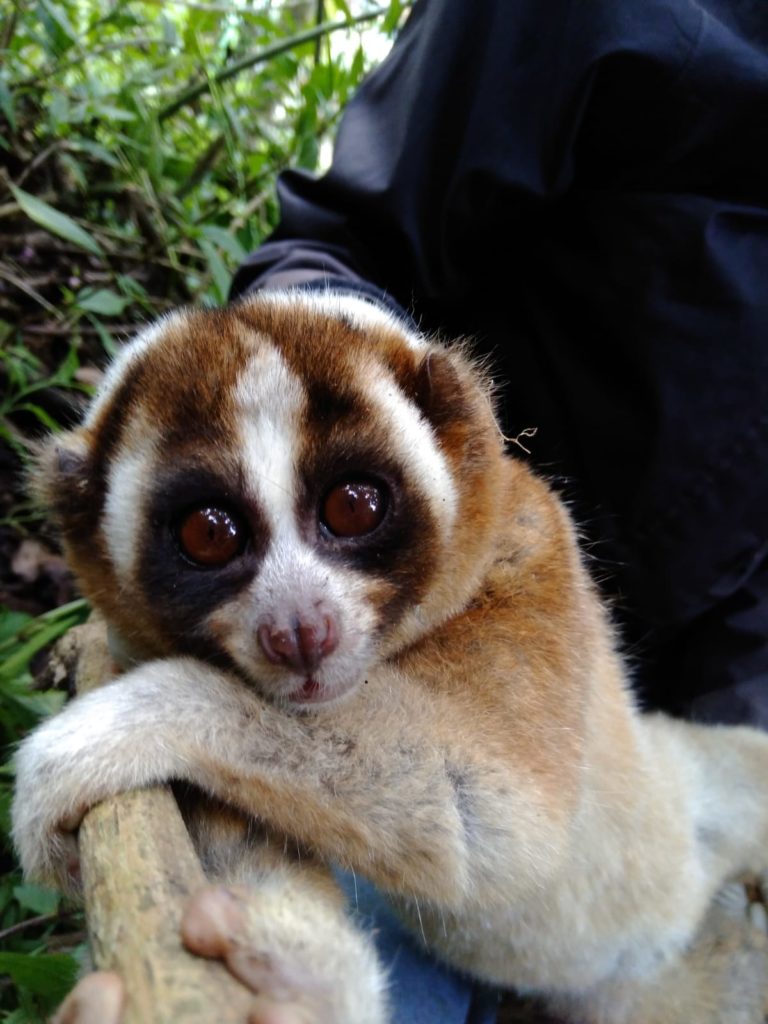
Lalit crossed the river
Anticipating is dispersal, we monitored him carefully to not losing him with his collar. And his big day happened. The following team came back from the field and give me the news that Lalit finally crossed the river (called Cibreum) and was not around the field site anymore. The next day, I went with one tracker to check by myself, excepting that he will not be too far away and he will easily find his sleep site. Our “easy” day was actually the most exciting day I have never had at LFP. After walking along the river for a while in a small path, Adin started to laugh and said that we needed to climb the steep cliff, the signal was heading to the other slope. I looked at it and thought, we will never make it; the cliff was 50m high and very abrupt. I called two other trackers, Yiyi and Rahmat, for reinforcements.
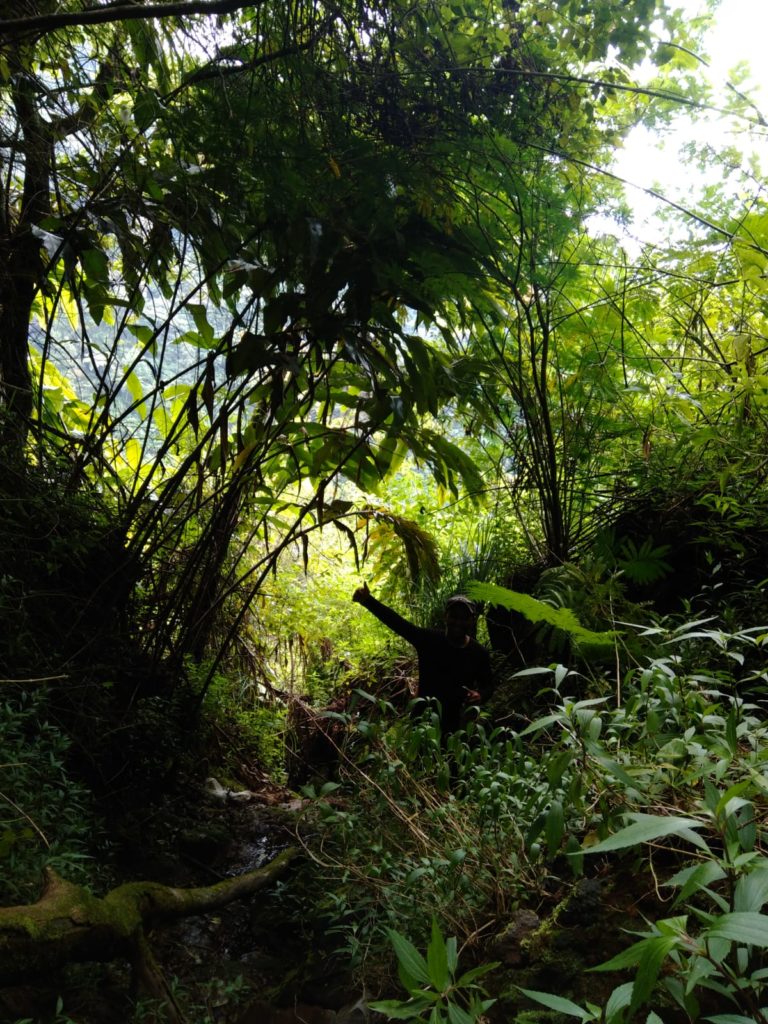
Climbing the cliff
We all started to climb up the cliff through the forest. It was a long hiking way until the top, sometimes the bushes were too deep and we needed to crawl through them. We were walking along the cliff, looking for safe grips alongside the rock. We chose a way, bravely started to walk, and retraced our steps a few times. I realised we had no choice to actually climb the cliff. By turns, we equipped ourselves with the climbing equipment and we pulled ourselves 3 m up only with the strength of the arms, through bushes and unstable ground. After 3 hours of walking-hiking without drinking any water (because of the fasting) we finally exit from the forest and arrived at the top. And we realised we were at Rahmat’s land! A normal easy path, daily used by farmers and motorbike, was 50m away! We can never anticipate where we will finally find the loris.
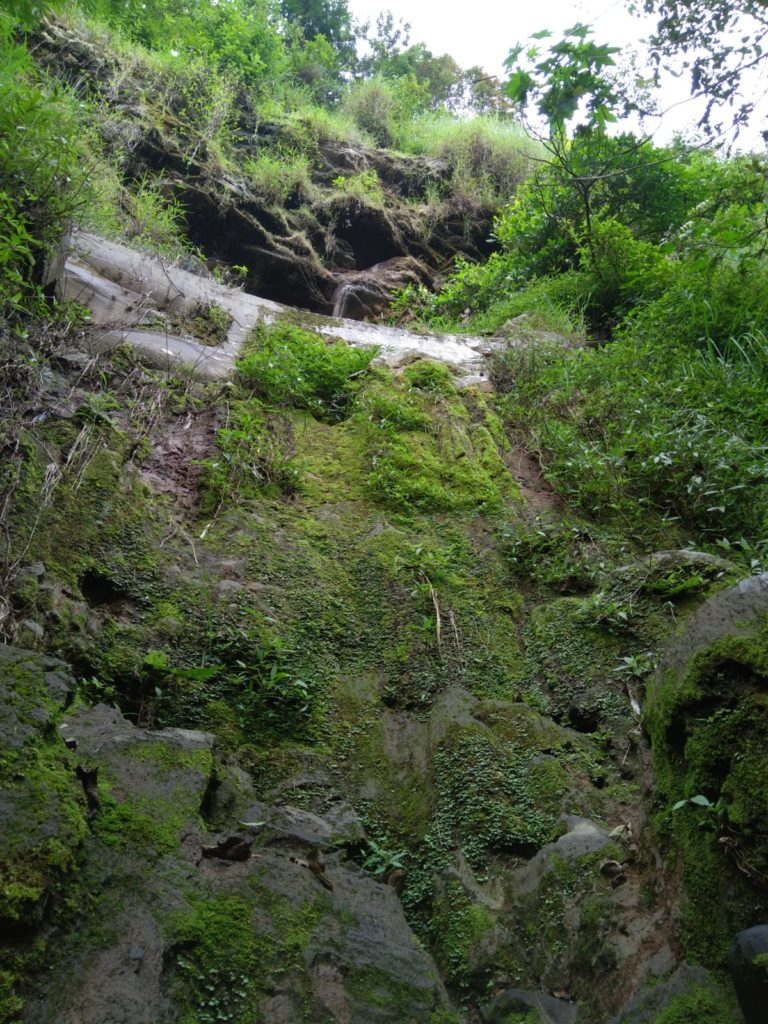
Goodbye Lalit
Lalit was sleeping at the edge of the forest, just 5m from Rahmat’s garden. We suspected that he crossed the river by using waterlines from the farmers as bridges. Adin climbed up the tree and caught him. Lalit was still sleepy and very calm. To prevent any stress of animals, we give them a stick to hold during capture. Lalit was holding his stick when I cut off his collar. I was wishing him “Good luck” when he suddenly dropped the stick, which fell on my head. It was a nice way to say goodbye! It was an emotional moment for me to let him go building his new adult life, I was the one who captured him for the first time, and I spent hours following him and watching him playing, learning feeding, social grooming with his family. But the next generation is already on, Lucu has a new infant that we will collar when it will be old enough. It is very important to observe subadults to learn about infant development and dispersal, and to prevent any dispersal mortality. HELENE BIROT
